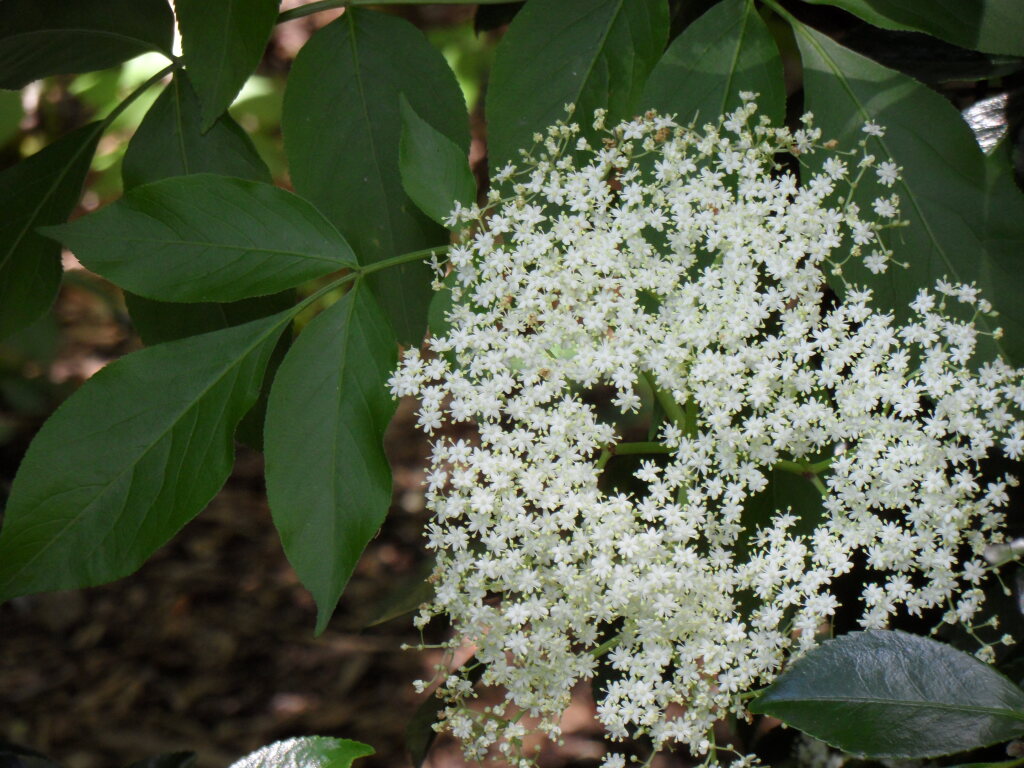Sambucus nigra
L. Common ElderDeciduous shrub or small tree to c. 6 m high, more or less glabrous; branches striate, lenticellate. Leaves petiolate, mostly 5–25 cm long; leaflets 3 or 5, ovate to elliptic, mostly 4–8 cm long and 15–45 mm wide, glabrescent, apex acute to acuminate, base obtuse, rarely asymmetric, margins serrate in upper two-thirds; petiole 2–5 cm long; petiolules 2–4 mm long. Inflorescences cymose panicles, 5–20 cm diam., much-branched; bracts ovate, to c. 1 mm long. Sepals usually 5, ovate, c. 0.5 mm long, glabrous; petals usually 5, 2.5–3 mm long, shortly connate, yellowish or white. Drupe more or less globose, c. 5 mm long, black, shiny. Flowers mainly Oct.–Jan.
Wim, GleP, VVP, VRiv, GipP, OtP, WaP, Gold, CVU, NIS, EGU, HSF, HNF, Strz, VAlp. Also naturalised SA, Qld, NSW, Tas. Native to Europe and western Asia. A cultivated ornamental that has become established at a number of sites in Victoria.
Jeanes, J.A. (1999). Caprifoliaceae. In: Walsh, N.G.; Entwisle, T.J., Flora of Victoria Vol. 4, Cornaceae to Asteraceae, pp. 642–647. Inkata Press, Melbourne.
 Spinning
Spinning


